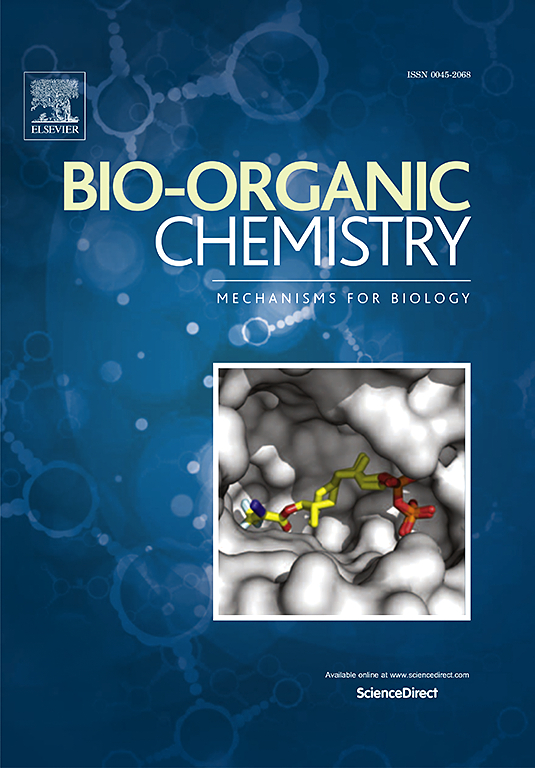Heterologous expression of calcium-independent mesophilic α-amylase from Priestia megaterium: Immobilization on genipin-modified multi-walled carbon nanotubes and silica supports to enhance thermostability and catalytic activity
IF 4.5
2区 医学
Q1 BIOCHEMISTRY & MOLECULAR BIOLOGY
引用次数: 0
Abstract
α-Amylases, constituting a significant share of the enzyme market, are mainly synthesized by the genus Bacillus. Enzymes tailored for specific industrial applications are needed to meet the growing demand across a range of industries, and thus finding new amylases and optimizing the ones that already exist are extremely important. This study reports the successful expression, characterization and immobilization of P. megaterium α-amylase (PmAmy) in E. coli protein expression systems. The recombinant PmAmy has a molecular weight of 56 kDa and its in silico predicted model structure presents a monomer composed of three domains, like most amylases. Regarding long-term storage, PmAmy remained 60 % active after 6 weeks of storage at −20 and −80 °C indicating its stable storage at low temperatures. PmAmy was found to be Ca2+ ion-independent for both catalytic activity and thermostability while Mn2+ enhanced activity in a concentration-dependent manner. The optimum characteristic working conditions of PmAmy were measured as pH 7.0 and 40 °C. Immobilizing PmAmy significantly improved its thermal stability, increasing its resistance to thermal denaturation by at least 4.1-fold. Kinetic analyses revealed that the KM and Vmax values of free PmAmy were 0.1 mg mL−1 and 556 U mg−1, respectively while immobilization resulted in an increase for both the KM and Vmax values. Kinetic analysis revealed enhanced activity for the Ca2+-independent immobilized enzyme, making it suitable for industrial applications particularly starch processing requiring moderate thermostability without the need for Ca2+ ions.

巨土Priestia megaterium中不依赖钙的中温α-淀粉酶的异源表达:在genipin修饰的多壁碳纳米管和二氧化硅载体上固定化以提高热稳定性和催化活性。
α-淀粉酶在酶类市场中占有重要的份额,主要由芽孢杆菌属合成。为了满足各行各业不断增长的需求,需要为特定工业应用量身定制的酶,因此发现新的淀粉酶并优化现有的淀粉酶是极其重要的。本研究报道了大肠杆菌α-淀粉酶(pamy)在大肠杆菌蛋白表达系统中的成功表达、表征和固定化。重组PmAmy分子量为56 kDa,与大多数淀粉酶一样,其硅预测模型结构为由三个结构域组成的单体。在长期储存方面,pammi在-20和-80°C下储存6周后仍保持60%的活性,表明其在低温下储存稳定。PmAmy的催化活性和热稳定性与Ca2+离子无关,而Mn2+则以浓度依赖性的方式增强活性。测定了PmAmy的最佳特性工作条件为pH 7.0和40°C。固定化PmAmy显著提高了其热稳定性,使其抗热变性能力提高了至少4.1倍。动力学分析表明,游离PmAmy的KM和Vmax值分别为0.1 mg mL-1和556 U mg-1,而固定化导致KM和Vmax值均增加。动力学分析表明,Ca2+非依赖性固定化酶的活性增强,使其适合工业应用,特别是需要适度热稳定性而不需要Ca2+离子的淀粉加工。
本文章由计算机程序翻译,如有差异,请以英文原文为准。
求助全文
约1分钟内获得全文
求助全文
来源期刊

Bioorganic Chemistry
生物-生化与分子生物学
CiteScore
9.70
自引率
3.90%
发文量
679
审稿时长
31 days
期刊介绍:
Bioorganic Chemistry publishes research that addresses biological questions at the molecular level, using organic chemistry and principles of physical organic chemistry. The scope of the journal covers a range of topics at the organic chemistry-biology interface, including: enzyme catalysis, biotransformation and enzyme inhibition; nucleic acids chemistry; medicinal chemistry; natural product chemistry, natural product synthesis and natural product biosynthesis; antimicrobial agents; lipid and peptide chemistry; biophysical chemistry; biological probes; bio-orthogonal chemistry and biomimetic chemistry.
For manuscripts dealing with synthetic bioactive compounds, the Journal requires that the molecular target of the compounds described must be known, and must be demonstrated experimentally in the manuscript. For studies involving natural products, if the molecular target is unknown, some data beyond simple cell-based toxicity studies to provide insight into the mechanism of action is required. Studies supported by molecular docking are welcome, but must be supported by experimental data. The Journal does not consider manuscripts that are purely theoretical or computational in nature.
The Journal publishes regular articles, short communications and reviews. Reviews are normally invited by Editors or Editorial Board members. Authors of unsolicited reviews should first contact an Editor or Editorial Board member to determine whether the proposed article is within the scope of the Journal.
 求助内容:
求助内容: 应助结果提醒方式:
应助结果提醒方式:


